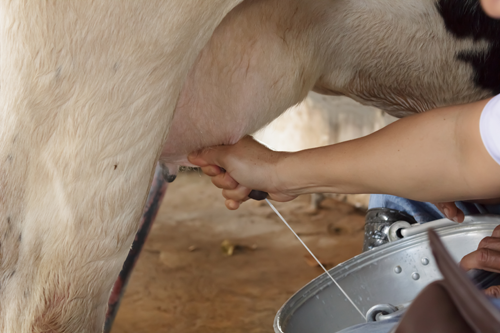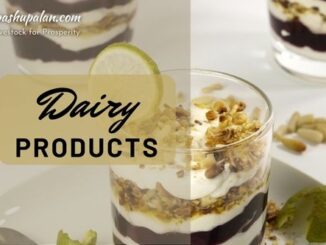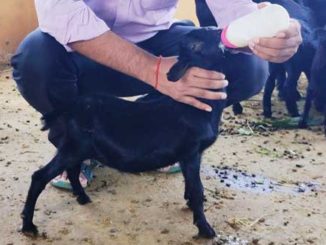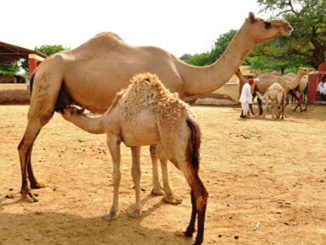Clean and safe milk
“It is the milk drawn from the udder of healthy animals, which is collected in clean, dry milking pail and free from extraneous material like, dirt, dust flies, hay , manure etc. Clean milk has a normal milk flavor with low bacterial count and is safe for human consumption.” Raw milk quality encompasses criteria relating to composition (milk-fat, protein, lactose, milk solids etc) and hygiene (total bacterial count, somatic cell count). Of these, somatic cell count (SCC): An udder quarter is considered healthy if it has an SCC < 100,000 cells/ml and is free of mastitis pathogens. The European Union milk quality standard (SCC not exceeding 400,000 cells/ml) is generally accepted as the international export standard.

The milk quality is important as it impacts on farm profitability, milk processing, human health, keeping quality etc. Increased somatic cell counts are associated with reduced milk yield. Milk quality has a substantial, adverse impact on milk processing. Mastitis is associated with an influx of somatic cells and increased activity of heat-stable proteases and lipases, leading to a breakdown of casein and milk fat.
Human health is challenged with the quality of milk produced at farm. Heat-stable enterotoxins produced by Staphylococcus aureus in milk from infected cows have been implicated in cases of food poisoning. Herds with mastitis problems are also at increasing risk of antibiotic residue violation, as a result of increased antibiotic usage. Mastitis affects the quality of pasteurized liquid milk and reduces its shelf life. The diseases like typhoid, dysentery too, have been associated with poor quality of milk produced as they are transmitted to the milk thorough human contact in unhygienic practices followed during milk production and handling.
Milk secreted from the healthy udder is almost sterile. It needs to be protected from all possible sources of microbial contamination as it may act good media for pathogenic organism. Milk gets easily contaminated and that’s why considered as perishable commodity.
Factors affecting clean and safe milk production
1. Milking management
- Cleanliness of animals, specially the hind quarters and thighs of cows is very important for clean and safe milk production. The adhered dirt should be brushed, and washed to procure the quality milk.
- Milking method, which is an art requiring experience and skill. Milking should be conducted gently, quietly, quickly, cleanly and completely. Stripping and full-hand milking are the two commonly used methods of milking. Many milkers tend to bend their thumb in, against the teat while milking, known as knuckling. Stripping causes more irritation to teats due to repeated sliding of fingers on teats; and so discomfort to cows. Correct milking method involves the full hand or fisting method. The first few strips of milk from each teat should be let on to a strip cup to see clots in milk for possible incidence of mastitis. Premilking teat stimulation of 10 to 20 s is generally considered adequate to achieve efficient milk letdown.
- Milking Norms : Complete milking has to be done, otherwise the residual milk may act an inducer for mastitis causing organisms and the overall yield may also be less. Milkers as well as the milking pails should be clean. The milkers should wear clean dress, their nails should be well trimmed and hands clean and disinfected between each milking by washing in antiseptic solution.
- Predipping : The procedure for predipping involves washing of teats with water and a sanitizer. The teats are then dried with an individual paper towel and dipped or sprayed with the sanitizer. A 30-second contact with sanitizer is needed to kill organisms. Then the sanitizer is wiped off of the teat with a paper towel.
- Postdipping : Applying teat dip to every quarter of every cow after every milking. Used to remove milk residue left on the teat and kill organisms on the teat adhered after milking. They also leave a residual film of sanitizer between successive milking.
- Keeping cows standing after milking seemed to be associated with lower SCC and low incidence of mastitis.
2. Feeding management
Good nutrition of dairy cow reflects in the term of quantity and quality of milk. Dusty or very fine concentrate during milking of animals should be avoided for clean milk production. Feeding of milch animals should be done an hour before milking. Silage and wet crop residues should not be fed at milking place as it may impart foul odour to the milk. Animal feed and fodder should also be free from anti- nutritional factors and toxins. The presence of unsuitable substances such as industrial and environmental contaminants, pesticides, pathogenic agents, and toxins in feed should be critically assessed for safety aspects before using . Feed and fodder used for milch animals should be free from fungicides, herbicides, insecticides, pesticides, fumigants, heavy metals etc.
3. Housing management
Housing of dairy animals should be designed to provide good drainage, well ventilation and sufficient lights. Manure handling, type of bedding and maintenance of cow beds all have major influences on hygiene. Infection is more common when animal arrives and lies down on the paddock just after the milking. Immediately after the milking the opening of teat canal is loose and more prone for infection. Therefore, the stalls of animal should be clean and dry with adequate bedding to minimize infection. The gutter and passage way should be regularly cleaned and scrapped to remove manure from the animal shed. In very wet areas sprinkling slaked lime over the surface helps to dry it out quickly. The floor of the milk shed should be swept with the clean water and disinfected with one percent bleaching powder solution. Sufficient supply of safe and potable water for drinking, washing udders and flanks of the animals, utensils etc. should be ensured. Control of flies and other insects is important as they act as potential source for disease transmission.
4. Health management
Vaccination of animals against FMD, HS, brucellosis etc. should be done regularly and a routine examination of animals should befollowed against diseases like; TB and brucellosis. The animals suffering from contagious disease must be kept separate from healthy herd. Appropriate dry cow therapy should be promoted at dairy farm. The inappropriate or prophylactic use of antimicrobial agents must be minimized . Coliform counts on bulk tank milk should be routinely performed as an indicator of fecal contamination. Well-defined culling strategies based on udder conformation, teat lesions should be strictly followed. Programme should built around the establishment of goals for udder health and periodic review of mastitis control programme. A broad range of resources should be developed to support these steps, including farmer short courses, farm guidelines, mastitis action plans, mastitis focus reports and milk quality awards.






Be the first to comment